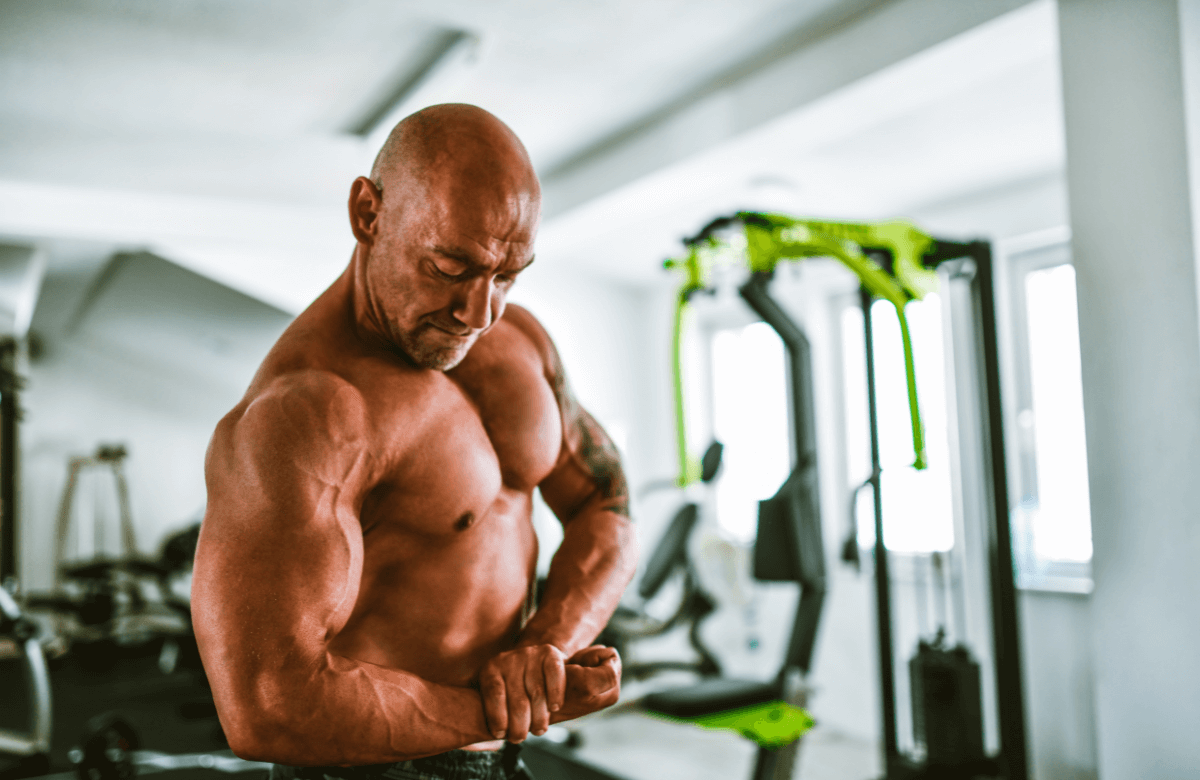Large, popping veins or vascularity are often seen as a marker of physical fitness. Vascularity is sought after by bodybuilders, enthusiasts, and novices alike.
This is because visible veins require less body fat, which helps with muscle definition and aesthetics.
But prominent veins aren’t always due to athleticism and can be the cause of genetics, health conditions, and specific situations. So you’re probably wondering “how to make your veins show,” right?
Here’s everything you need to know about what affects vascularity and techniques you can use to make your veins pop.
Jump to:
What Makes Veins Pop?
There are several factors that affect the appearance of veins. Highly visible veins are typically the result of a low percentage of body fat and high lean muscle mass. But you can have visible veins while moving, standing still, regardless of your body weight.
Age and Genetics
Let’s start with the factors you can’t control—age and genetics.
Some individuals naturally have more prominent veins and more translucent skin. Others have larger surface veins which can be especially visible after resistance training.
Visible veins can also be more common in older individuals. Older people experience changes to their vein valves and skin elasticity. This can take the shape of visible hand veins or health issues like varicose veins or spider veins.
Body Fat Percentage
Body fat percentage is one of the main factors contributing to visible veins. Veins will pop more if you don’t have excess body fat under the skin covering your muscles.
Veins can start to show between 12%-10% body fat levels.
You can decrease body fat and lose excess weight through several measures. Cardiovascular exercises, strength training, and adjusting your calorie diet can help you lose excess body fat.
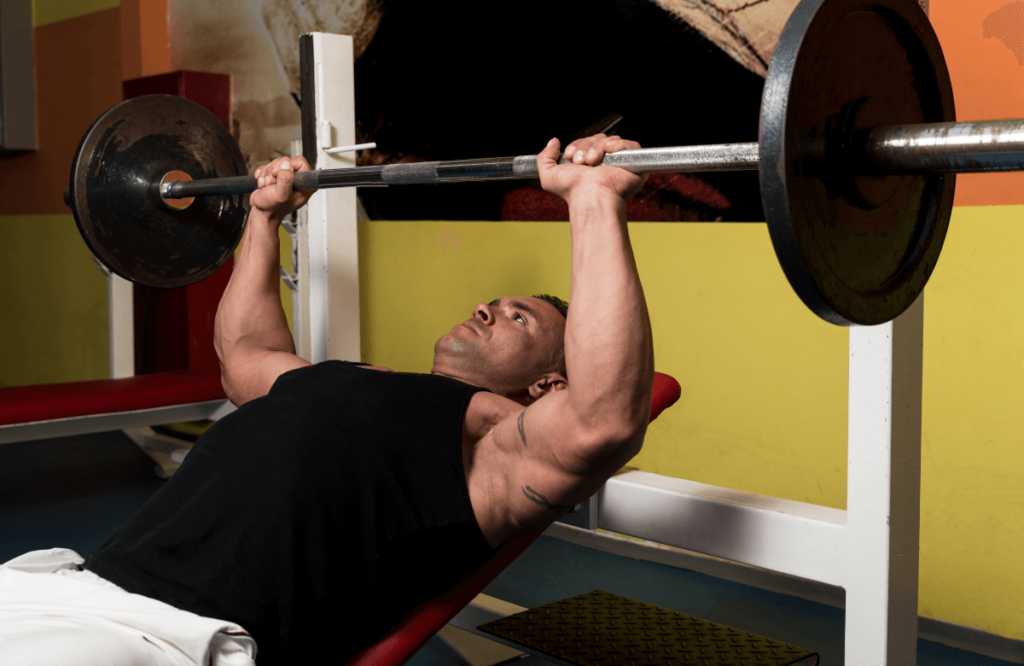
Muscle Mass
You’ve seen competitive bodybuilders, right? Besides low body fat percentages, they also tend to have large, dense muscles. More lean muscle mass causes the veins to move closer to the surface of the skin and become more visible.
Muscle growth requires weight lifting, high protein intake, and consistency. Lifting heavy weights with exercises that target the arm muscles, like the biceps, triceps, and forearms, can give you a veiny appearance.
Blood Flow
Think about the purpose of your veins—they’re meant to move blood around the body, right?
Your blood flow directly affects their visibility and size. Intense exercise can increase blood pressure, causing the veins to dilate, enhancing their definition and prominence.
Other factors, like body temperature, blood flow resistance training, and supplements, can affect overall vein visibility.
Water Retention
Besides body fat, muscle mass, and blood, water significantly affects vein visibility. The human body is made up of 45–75% water on average, and some of it is stored between the skin and veins.
This is known as subcutaneous water and can make you look puffy or bloated.
If your body is retaining too much water, you won’t see your veins pop as much. The best way to combat this is to drink plenty of water, manage your sodium intake, and eat a clean diet.
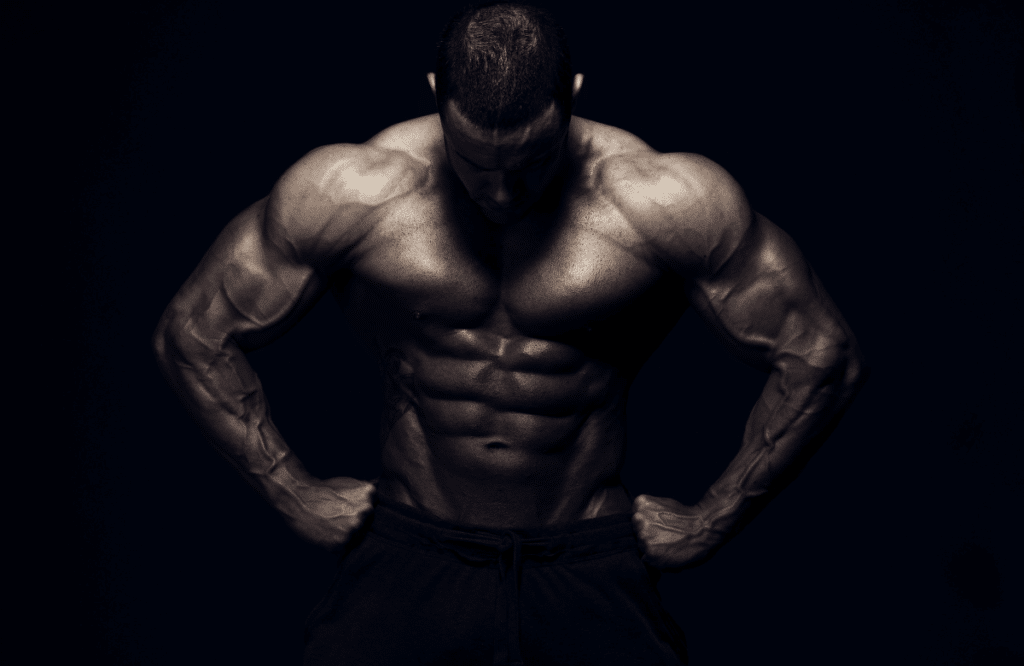
How to Make Your Veins Show by Losing Weight
The most common reason for an increase in vascularity is low body fat percentage. A small layer of fat between the veins and the surface of the skin can make them less prominent. This subcutaneous fat can hide your veins even if you’re reasonably lean.
Vascularity will differ from individual to individual, but veins tend to be more noticeable around 10% body fat in men.
Women’s veins aren’t usually as pronounced as men’s but may become visible near 10–12% body fat.
A lower body fat percentage combined with muscle growth is the fastest way to visible veins, but it requires a bit of know-how and commitment.
Burn More Calories than You Consume
The primary way to lose weight is through a calorie deficit. Calorie deficits occur when you consume fewer calories than your body burns. This causes the body to use stored fat as fuel, causing you to lose weight.
You can burn more calories than you consume by adjusting your caloric intake, increasing your workout routine, or a combination.
That said, there are healthy ways to go about losing weight and unhealthy methods. It’s essential to calculate a safe caloric deficit based on your body composition within a realistic timeframe.
Going overboard can cause muscle loss, nutrient deficiencies, and other health complications. The specifics of your calorie deficit will depend on your fitness plan, body composition, and goals.
Include Cardio
One of the easiest ways to burn more calories than you consume is to incorporate cardio workouts into your routine. Aerobic exercises performed for sustained periods, like jogging, cycling, or swimming, can help you lose weight.
You can make cardio workouts the primary focus of your fitness plan or a secondary measure, depending on your fitness goals.
Either way, the American Heart Association recommends 150 minutes of moderate-intensity aerobic training per week or 75 minutes of vigorous training. A combination of the two can increase your endurance, help you lose weight, and keep you healthy.
Eat Clean
Besides adjusting your caloric and macronutrient intake, it’s critical to eat a healthy diet. Clean diets should incorporate organic, nutritious, whole, and unprocessed foods.
If you’re in a caloric deficit, it’s essential to eat adequate lean protein, like chicken breast, lean beef, and turkey.
Processed meals, junk food, and sugary beverages can contain excessive calories without many nutrients. These meals can also contain high amounts of sugar, fat, and sodium, which can lead to other health complications.

How to Get Veiny Arms by Training
Building muscle is necessary for visible veins. Despite lowering your body fat percentage, your veins might not pop if you don’t have dense lean muscle mass. Larger muscles press the veins closer to the surface of the skin, making them easier to see.
Like losing weight, there are several strategies and methods you can use to build muscle mass. Lifting heavy weights, adequate protein consumption, and getting enough calories is critical.
Incorporate Weight Lifting
Whether you call it resistance training, strength training, or weight training, it’s critical to incorporate it into your routine. Challenging workouts create tiny tears in your muscle fibers, causing them to repair and grow bigger, stronger, and denser.
Larger muscles will push your veins closer to the skin’s surface, providing you with more vascularity.
There are several ways to incorporate strength training into your routine; the American Heart Association recommends at least two days per week for most adults. Some options include:
- Barbell training
- Resistance bands
- Bodyweight exercises
- Free weights, like dumbbells and medicine balls
There are several beginner-friendly and intermediate routines you can use to build muscle mass, gain strength, and increase vascularity.
Eat Enough Protein
Protein is the building block for muscle development. You need protein for protein muscle synthesis, or the process in which the body builds and repairs muscle tissue.
It’s often recommended to consume between 1-1.5 grams of protein per pound of body weight.
So, if you weigh 160 lbs, you might consume upwards of 240 grams of protein each day. You can use online calculators to determine your daily macronutrient needs depending on your fitness goals and body composition.
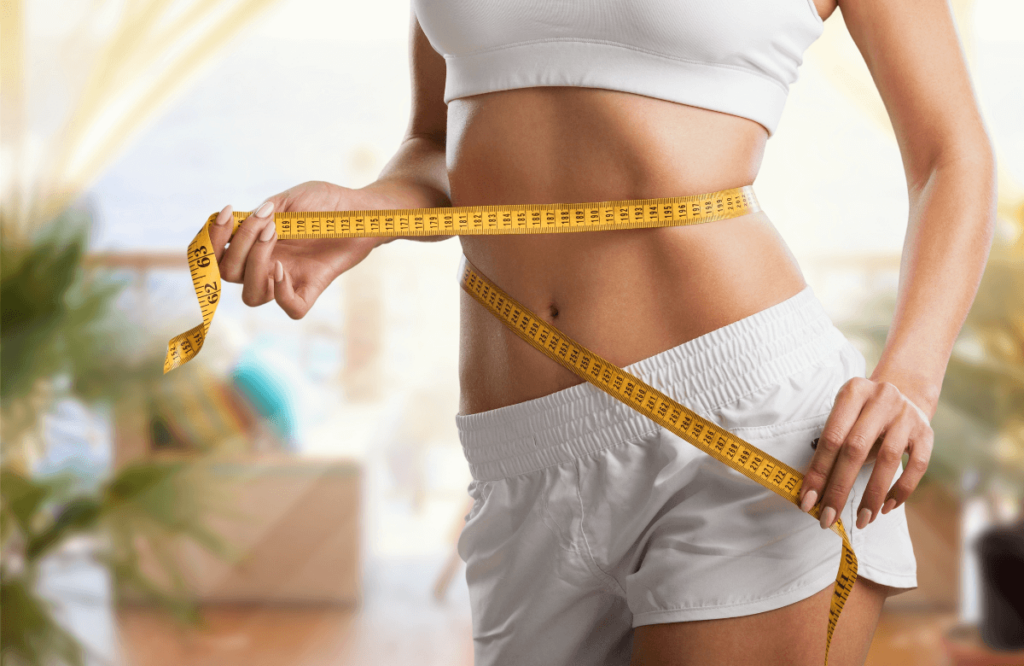
How to Make Your Veins Show by Reducing Water Retention
Besides a more athletic physique, water can significantly impact the appearance of your veins.
Excess subcutaneous water is stored between the skin and veins, causing a puffy and bloated appearance. You can address excess water retention by adjusting your water consumption, sodium intake, and diet.
Drink More Water
Although it might sound backward, drinking plenty of water can help you reduce water retention and keep your muscles hydrated.
If you’re dehydrated, you’re losing more water than you’re consuming. The body makes up for the lack of water by conserving and reabsorbing what’s left, causing more water retention.
Drinking plenty of water helps flush excess water, reducing water retention, puffiness, and bloating.
There isn’t a one-size-fits-all answer when it comes to daily water intake, but the U.S. National Academies of Sciences, Engineering, and Medicine recommends 3.7 liters for men and 2.7 liters for women.
The exact amount you need will depend on factors like your activity levels, age, overall health, and ambient temperature.
Reduce Sodium Intake
Excessive sodium is another reason your body retains water. Highly processed foods with loads of salt cause you to retain more water, leading to puffy skin and less vascularity.
Many processed foods have excessive salt; for example, one serving of Nacho Cheese Doritos has roughly 210mg of salt. The recommended upper limit is 2,300 mg with an ideal of 1,500 mg, according to the American Heart Association.
It’s best to cut out junk food and replace high-sodium items with healthier alternatives, like fruits, vegetables, and nuts. If you do include processed foods, look for low-salt options to reduce sodium intake.

How to Get Veiny Arms by Increasing Blood Blow
The veins move blood around the body, so increasing blood flow should increase their size and visibility. Here are a few different tools you can use to improve your blood flow.
Increase Body Temperature
Heat causes veins to dilate and expand as a way to cool you off by increasing blood flow to the skin. This also makes them easier to see. In colder temperatures, the veins can become less visible as a way to preserve heat.
You may not be able to control your body in every situation, but warming up can increase your vascularity.
Work Out
One way to make your veins pop is to get in a pump at the gym. When you lift weights, the body moves more blood to the muscles to provide energy and nutrients. This is commonly called “the pump” and makes the veins more noticeable.
Isolation movements engaging specific muscle groups, like the biceps or calves, may help you see your veins more easily.
It’s more likely that you’ll see your veins after resistance training if you have a low body fat percentage. Veins can also stick out after workout if you’re dehydrated, so always remember to drink plenty of water during exercise.
Use Blood Flow Restriction Training (BFR)
Another way you can make your veins more striking is through Blood Flow Restriction Training (BFRT).
This training method requires you to wrap unique blood pressure cuffs and bands around the muscle. This puts more pressure on the arteries, preventing blood from flowing out of the limbs and back to the heart.
BFRT will increase vein visibility while allowing you to build more muscle with less weight. Research has suggested that you may see results with just 20% of your normal maximum load.
However, working with a trainer or someone certified in Blood Flow Restriction Training is best.
Performing these techniques incorrectly can cause nerve or vascular damage. It’s also best to consult your trainer or physician if you’re a beginner, older, or have blood pressure and cardiovascular complications.
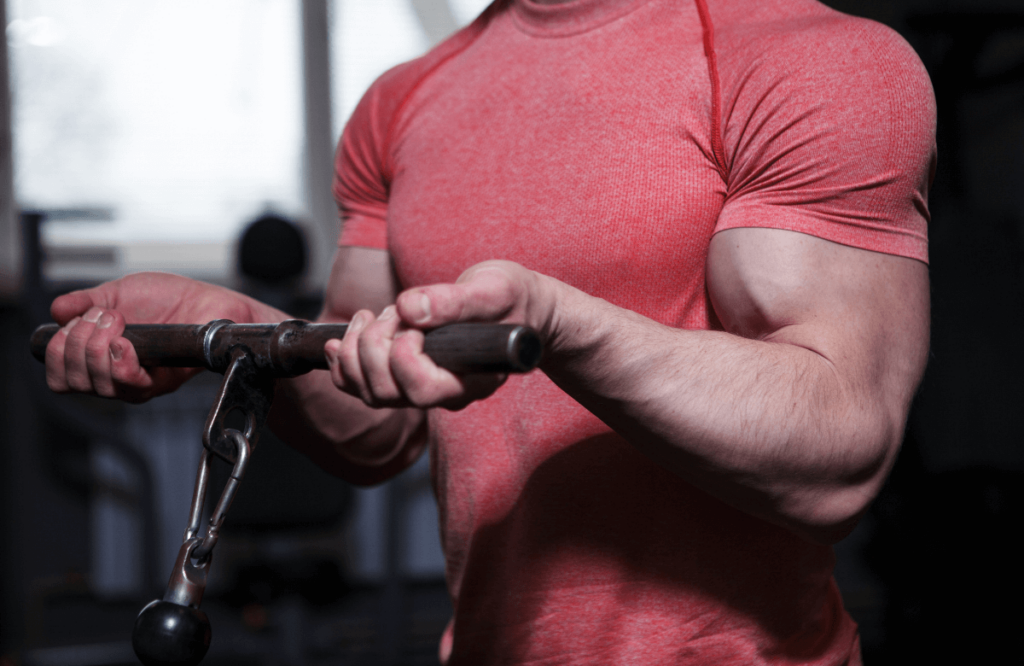
Other Tips
The most reliable way to make your veins more noticeable is to lose weight and gain muscle mass, but there are short-term tricks you can utilize in a pinch. Techniques like increasing body temperature and blood flow can temporarily enhance vein visibility, which can be beneficial for taking photos or seeing progress.
Go to the Sauna
Saunas can help with vein appearance, as they pull excess water from the skin and increase body temperature. These factors bring your veins closer to the skin’s surface, making them easier to see.
Many gyms have saunas on-site and are included with membership.
After a training session, you can hit the sauna to relax your muscles, increase vascularity, and receive numerous health benefits. Staying hydrated is essential, as saunas can reach temperatures of 180°F or higher.
Schedule a Massage
Another way to increase blood flow and make your veins pop is through a massage. An effective massage will help your muscles relax, increasing blood flow and temporarily increasing vascularity.
If you’re trying to get the perfect progress picture for social media, getting a massage and taking a photo quickly after may be helpful. This way, you’ll look your best and have a more visible striking physique.

Frequently Asked Questions (FAQ)
How Do You Make Your Veins Show Quickly?
The easiest way to make your veins show quickly is to increase body temperature, stay hydrated, and work out. Increasing body temperature causes the veins to expand and dilate, making them more visible. Drinking water will boost circulation and help get rid of water retention. Resistance training causes the muscles to swell with blood, increasing vascularity.
How Can I Make My Arm Veins Visible?
The most reliable way to make your arm veins visible is to lose body fat through diet and training. Veins become more prominent with lower body fat percentage. Larger muscles also push the veins closer to the skin’s surface, helping them become more noticeable. If you’re looking for a quick fix, try doing isolation exercises in the arms to get a good “pump.”
How Long Does It Take To Make Veins Pop?
If you’re looking for long-term results, you must lose body fat and gain muscle mass. Veins are typically visible in men with around 10–12% body fat. Losing no more than 2% body fat per month is recommended, so it may take you a few months, depending on your current body composition.



